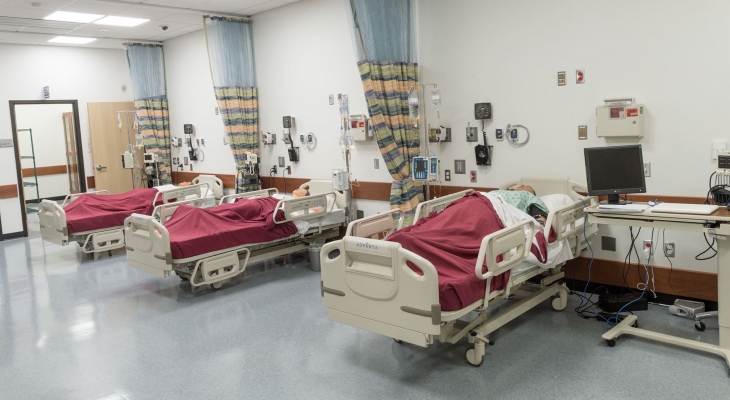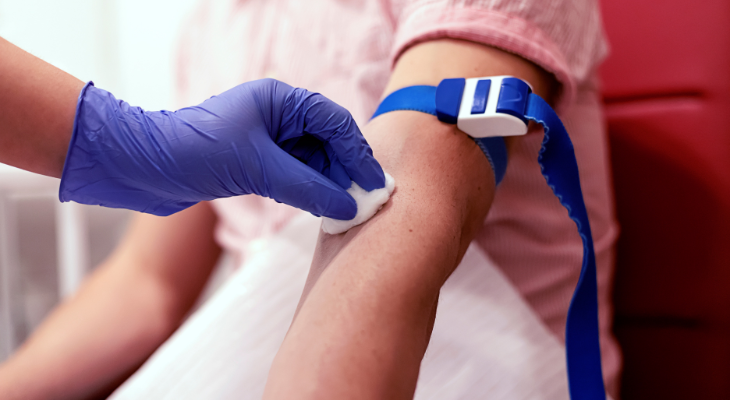
Nursing Program Information Session
America's first public community college began in 1901 as an experimental postgraduate high school program. It was the "brain child" of J. Stanley Brown, Superintendent of Joliet Township High School, and William Rainey Harper, President of the University of Chicago. The college's initial enrollment was six students. Today, JJC serves more than 30,000 students in credit classes and noncredit courses.*
Joliet Junior College, the nation's first public community college, offers pre-baccalaureate programs for students planning to transfer to a four-year university. A comprehensive community college, JJC provides occupational education leading directly to employment, adult education and literacy programs, workforce development services, and student support services.
J. Stanley Brown, Superintendent of Joliet Township High School, and William Rainey Harper, President of the University of Chicago, founded JJC in 1901 as an experimental postgraduate high school program. The college's initial enrollment was six students; today, JJC serves more than 30,000 students in credit and noncredit courses.*
Brown and Harper's innovation created a junior college that academically paralleled the first two years of a four-year college or university. It was designed to accommodate students who desired to remain within the community yet still pursue a college education. Within a few years, the concept of "community" had grown to include students outside the existing high school district.
By December 1902, the Board of Trustees officially sanctioned the program and made postgraduate high school courses available tuition-free. In 1916, the Board of Trustees officially named the post-high school program Joliet Junior College. The following year, the North Central Association of Colleges and Schools accredited the college, and the State Examining Board approved selected courses for teacher certification. Enrollment at the time numbered 82 students.
In the years that followed, JJC responded positively and creatively to the pressures of a world war, depression and rapid social change. The college met the challenge of a growing technological society in the 1920s and 1930s by expanding the curriculum to include programs in business and industrial training. The return of war veterans in the 1940s and 1950s prompted further curriculum development in the area of two-year occupational programs. Both the transfer and occupational divisions of the college grew at a steady pace.
In 1965, the Illinois Legislature enacted the Illinois Junior College Act, creating specific districts served by various community colleges. JJC was to serve people in parts of seven counties in northern Illinois. By 1967, college enrollment approached 4,000 students. In February of that year, the citizens of 12 high school districts in portions of Will, Grundy, Kendall, LaSalle and Kankakee Counties voted to establish Illinois Community College District 525, an area to be served by JJC.
For two years, the college rented facilities at the original Joliet Township High School building. In February 1968, the Board of Trustees selected 368 acres on the west side of Joliet for a new campus. In April 1969, the Board voted to build interim facilities consisting of 17 temporary buildings on the new site. The college began offering classes at its new location in September 1969, serving 4,130 day and evening students. The $50 million Main Campus was fully operational in the fall of 1974. During 1973 and 1974, both the area and the population of the district expanded with the addition of Peotone, Dwight, Odell, and the area of Lemont that is in Cook County. Today, the 1,442-square-mile district serves a population of more than 700,000 in Will, Grundy, Kendall, LaSalle, Kankakee, Livingston, and Cook Counties. To better serve people throughout the district, off-campus instructional sites have been established at many high schools in the college district, as well as civic centers, churches, libraries, and businesses.
In the fall of 1980, the college opened an instructional site at the Louis Joliet Renaissance Center at 214 N. Ottawa Street in Joliet's downtown City Center. Today, that facility is known as the college's City Center Campus, which offers a variety of credit and noncredit classes. The City Center Campus provides hands-on experience for JJC Culinary Arts and Hospitality Management students who run the Renaissance Center restaurant and banquet facilities. The City Center Campus also houses the college's Community and Economic Development (CED) division, as well as the Division of Adult and Family Services (DAFS). Community and Economic Development is the headquarters for workforce preparation, employee training, business development and technology deployment for JJC's district. The Division of Adult and Family Services works to provide a range of education, job training, employment, and support services for participants and their families. Most programs and services are provided at no cost, and provide funds for tuition, books, transportation, and childcare.
In January 1993, JJC opened the Romeoville Campus at 1125 W. 135th Street in Romeoville, a 35,000-square-foot facility with 18 general classrooms; biology, chemistry and computer skills labs; a library/learning resource center; and offices for student services, faculty and administrative support. Romeoville Campus offers a full range of credit and noncredit classes, including accounting, advertising, biology, business, business law, chemistry, computer information systems, culinary arts, economics, education, English, geography, history, management, mathematics, philosophy, political science, psychology, real estate, sociology, speech, and word processing.
The Main Campus expanded in 1996 with the Arthur G. and Vera C. Smith Business and Technology Center. The 90,000-square-foot facility houses several state-of-the-art microcomputer labs; the Business and Computer Information and Office Systems departments; and the Electronics Engineering Technology, Electrical/Electronic Automated Systems Technology, Construction Technology and Computer-Aided Drafting programs. The facility also is home to many of JJC's Community and Economic Development workforce services that assist business and industry in adapting modern technologies directly into the workplace.
In 2000, the Main Campus opened the Veterinary Technology and Industrial Training Building and Centennial Commons campus student housing, which is run by an outside management group.
With significant growth in student population from Grundy County, JJC opened the Morris Education Center at 1715 N. Division Street in Morris in fall 2001. The college recently expanded the facility from two classrooms of almost 1,000 square feet to four classrooms with over 3,000 square feet.
In 2007, the John H. Weitendorf Sr. Agricultural Education Center was opened to serve the needs of JJC agriculture and veterinary medical technology students. The property is located on Laraway Road in Joliet and was donated by JJC alumnus John H. Weitendorf.
Illinois Community College District 525 is one of 40 community college districts governed by the Illinois Community College Board under the Illinois Board of Higher Education. The ICCB was created by the General Assembly under the provisions of the Illinois Public Junior College Act of 1965. Its primary responsibilities are to coordinate the educational programs offered through the community college system, to allocate state funding for capital expansion and to act on curriculum changes proposed by individual community colleges.
JJC is directly governed by a seven-member Board of Trustees, all of whom are elected from within the district for six-year terms. A student representative, elected annually by the student body, is a non-voting member of the Board. The officers of the Board are chairman, vice chairman and secretary, all of whom are elected by their peers for a one-year term.
* Refers to data from 2016-2017

